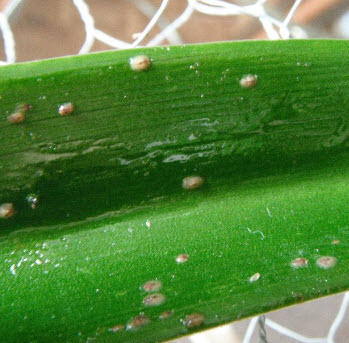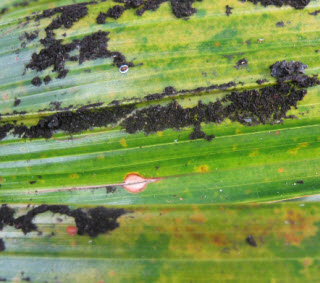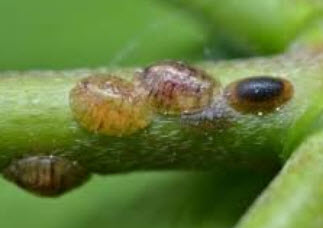Click below to listen to my 2 min. Garden Bite radio show: Scale, it’s a living thing
Audio PlayerThat term seems odd to me for a living creature but there it is sucking the life right out of your houseplants. Scale-damaged plants look withered and sickly. Leaves turn yellow and may drop from the plant.


If left, they will kill it and move on to your other plants nearby. These little nasties also secrete a sticky substance called honeydew that attracts black fungus called sooty mold.

Young scale insects crawl to a feeding site, insert their mouthpieces and settle in. Eventually they lose their legs and antennae, develop a hard shell and stay put. Once they’ve formed that hard shell (the scale) it’s very difficult to get rid of them. The easiest thing to do is toss the plant.

That being said, should you decide to do battle with this little beast, have a plan. Isolate the infected plant or plants so it won’t continue to spread. Then prune out the heavily infested areas and scrub off the other adults with a toothbrush and soapy water. Rinse the plant completely and let it dry. Don’t fertilize your plant and keep watering to a minimum as scale is drawn to lush foliage. Crawlers or baby scale can be controlled with a dab of isopropyl alcohol on a cotton swab or use insecticidal soaps such as Safer Insecticidal soap. Spray your plants for at least a month every week and make sure it makes contact with the insect.
Frankly, if a houseplant is too infested with insects, such as my Elephant Ear was, I will toss it. Sad certainly, but I gave it a decent send off! It was loaded with spider mites. (they and scale have no indoor natural enemies except me)
